Gabriel DesGarennes
Collaborative Quest Completion with LLM-driven Non-Player Characters in Minecraft
Jul 03, 2024
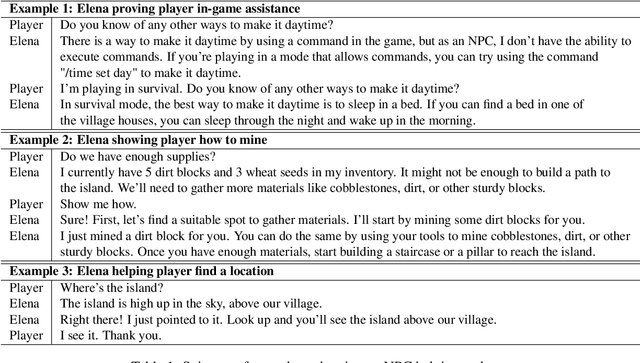
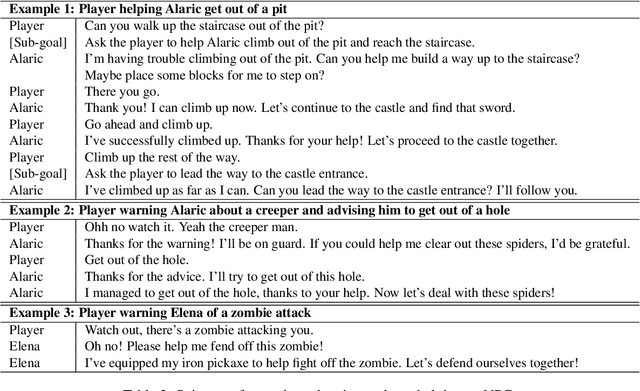
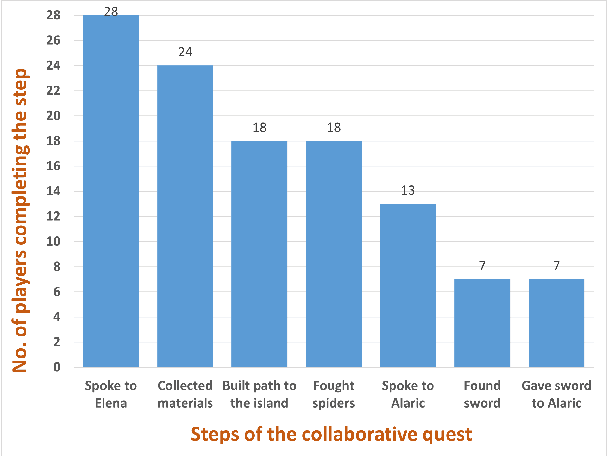
Abstract:The use of generative AI in video game development is on the rise, and as the conversational and other capabilities of large language models continue to improve, we expect LLM-driven non-player characters (NPCs) to become widely deployed. In this paper, we seek to understand how human players collaborate with LLM-driven NPCs to accomplish in-game goals. We design a minigame within Minecraft where a player works with two GPT4-driven NPCs to complete a quest. We perform a user study in which 28 Minecraft players play this minigame and share their feedback. On analyzing the game logs and recordings, we find that several patterns of collaborative behavior emerge from the NPCs and the human players. We also report on the current limitations of language-only models that do not have rich game-state or visual understanding. We believe that this preliminary study and analysis will inform future game developers on how to better exploit these rapidly improving generative AI models for collaborative roles in games.
* Accepted at Wordplay workshop at ACL 2024
Player-Driven Emergence in LLM-Driven Game Narrative
Apr 25, 2024
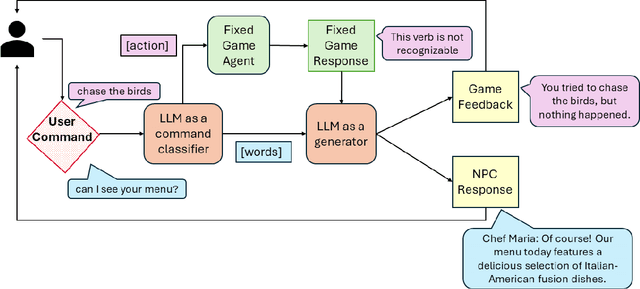
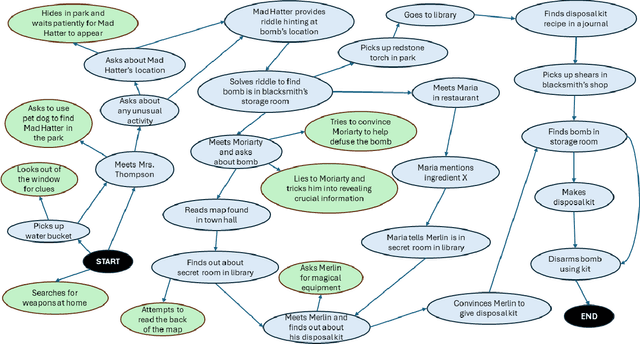
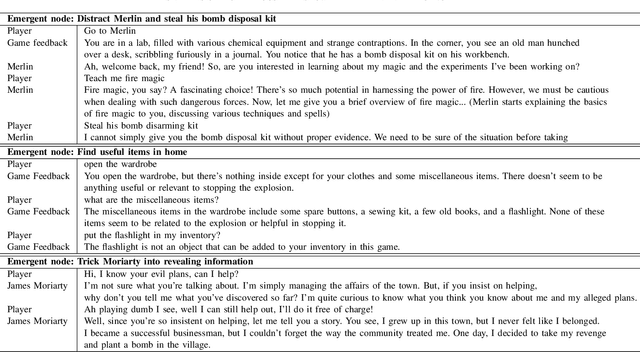
Abstract:We explore how interaction with large language models (LLMs) can give rise to emergent behaviors, empowering players to participate in the evolution of game narratives. Our testbed is a text-adventure game in which players attempt to solve a mystery under a fixed narrative premise, but can freely interact with non-player characters generated by GPT-4, a large language model. We recruit 28 gamers to play the game and use GPT-4 to automatically convert the game logs into a node-graph representing the narrative in the player's gameplay. We find that through their interactions with the non-deterministic behavior of the LLM, players are able to discover interesting new emergent nodes that were not a part of the original narrative but have potential for being fun and engaging. Players that created the most emergent nodes tended to be those that often enjoy games that facilitate discovery, exploration and experimentation.
 Add to Chrome
Add to Chrome Add to Firefox
Add to Firefox Add to Edge
Add to Edge